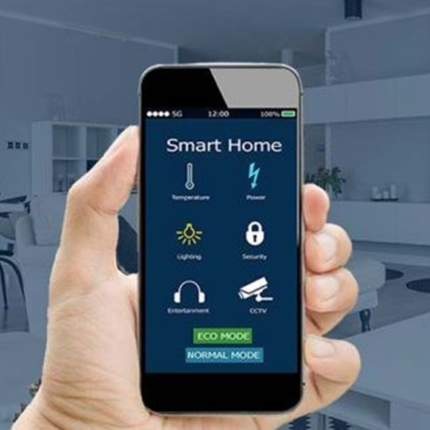Description
Overview of Security Systems Using Zigbee
Zigbee-based security systems offer a reliable, low-power solution for modern smart homes and businesses. These systems leverage the Zigbee wireless protocol, known for its mesh networking capability, to connect various security devices like cameras, motion sensors, and door/window sensors. By using a mesh network, Zigbee ensures extended coverage and stable communication between security components, even in large buildings. Security systems built on Zigbee are also highly scalable, allowing users to easily add more devices as needed.
With its low energy consumption, Zigbee ensures that battery-powered devices like sensors can operate for long periods without frequent maintenance. Additionally, its robust encryption standards offer a high level of data security, making Zigbee an optimal choice for both residential and commercial security systems.
Applications of Security Systems Using Zigbee
- Motion detection systems
- Door and window security sensors
- Intrusion detection systems
- Video surveillance cameras
- Smoke and fire alarm systems
- Glass break sensors
- Smart door locks
- Wireless security alarms
- Water leak detection systems
- Gas leak detection systems
- Environmental monitoring systems
- Temperature monitoring in security environments
- Keyless entry systems
- Panic button systems
- Asset tracking in secured areas
- Access control systems
- Perimeter security systems
- Garage door monitoring systems
- Smart lighting for security
- Security sirens and alarms
- Visitor management systems
- Occupancy detection for security monitoring
- Security gateway integration systems
- Security system control panels
- Wireless keypad for security access
- Emergency response alert systems
Technical Specifications of GAO Tek Security Systems Using Zigbee
Zigbee end devices in Security Systems
In Zigbee-based security systems, Zigbee end devices, such as sensors and cameras, play a crucial role in ensuring seamless operation and enhanced security coverage. These end devices are typically placed at critical points within the premises, such as doors, windows, entryways, and perimeters, depending on the security requirements. Motion detectors, for example, are installed in high-traffic areas or entry points, while door/window sensors are attached to detect unauthorized access. Cameras are strategically placed for surveillance, offering real-time monitoring of sensitive areas.
Zigbee end devices communicate wirelessly with a central hub or security control panel, forming part of a mesh network. Each end device sends data to the central hub via Zigbee routers or directly if within range, ensuring efficient data transmission. The mesh network design allows data to “hop” from one device to another, overcoming barriers like walls or distance, which could otherwise disrupt the communication.
One of the key advantages of using Zigbee end devices in Security Systems is their low power consumption. Battery-operated sensors, alarms, and detectors can run for extended periods without requiring frequent recharging or battery replacement. Zigbee end devices are attached using wireless communication, often adhered or mounted to walls, doors, or windows, depending on the application.
With advanced encryption and authentication protocols, Zigbee provides a secure framework for data transmission, making these end devices essential components in modern Security Systems, safeguarding homes, offices, and commercial environments.
Zigbee Gateways in Security Systems
In Zigbee-based security systems, Zigbee gateways serve as the central hub, connecting all security devices to the larger network or cloud services. These gateways are responsible for receiving data from various Zigbee end devices, such as motion sensors, door/window sensors, and cameras, and transmitting that data to a central security monitoring system or cloud for processing and alerts.
Zigbee gateways are typically installed in secure, central locations within a building to optimize communication with all connected security devices. Placement is key for efficient operation; they should be situated in a spot where signals from end devices can be easily received. In larger buildings or homes, gateways may be installed in a central control room or near the security control panel to maintain connectivity with all devices.
The installation of Zigbee gateways is usually straightforward, as they can be mounted on walls or placed on flat surfaces like shelves or desks. To ensure optimal network performance, the gateway should be positioned away from any sources of interference, such as thick walls, metal objects, or other wireless devices that might disrupt the signal.
Zigbee gateways often connect to the broader network via Ethernet or Wi-Fi, ensuring a stable link to the cloud or security server. Once configured, the gateway securely manages the flow of encrypted data between the security devices and the central monitoring system, offering real-time monitoring and control for the entire Security System. This makes Zigbee gateways a critical backbone of modern security architectures.
Cloud Systems
GAO Zigbee Cloud Systems consist of the following parts:
GAO Zigbee Gateways and Zigbee End Devices
GAO Zigbee Cloud Services Engine
Cloud Infrastructure, HTTP/HTTPS or MQTT/MQTTS protocols, Zigbee Middleware, Data Analytics and Business Intelligence, and Security Measures.
Integration APIs
APIs enable seamless integration between the Zigbee solution and existing security systems such as POS, inventory management, and e-commerce platforms, allowing for data exchange and synchronization.
Server, PC & Mobile Systems
GAO Server, PC & Mobile Zigbee Systems are composed of
Zigbee Gateways and Zigbee End Devices
GAO Server, PC & Mobile Software Engine Zigbee
Servers, PCs, Mobile Computing Devices and Infrastructure, Middleware Software, and Database Management System.
Integration with Security Systems
The server, PC, and mobile solution integrates with existing security systems such as inventory management, asset management, point-of-sale (POS), and enterprise resource planning (ERP) systems. Integration is achieved through APIs, database connections, or middleware adapters, enabling seamless data exchange and synchronization.



